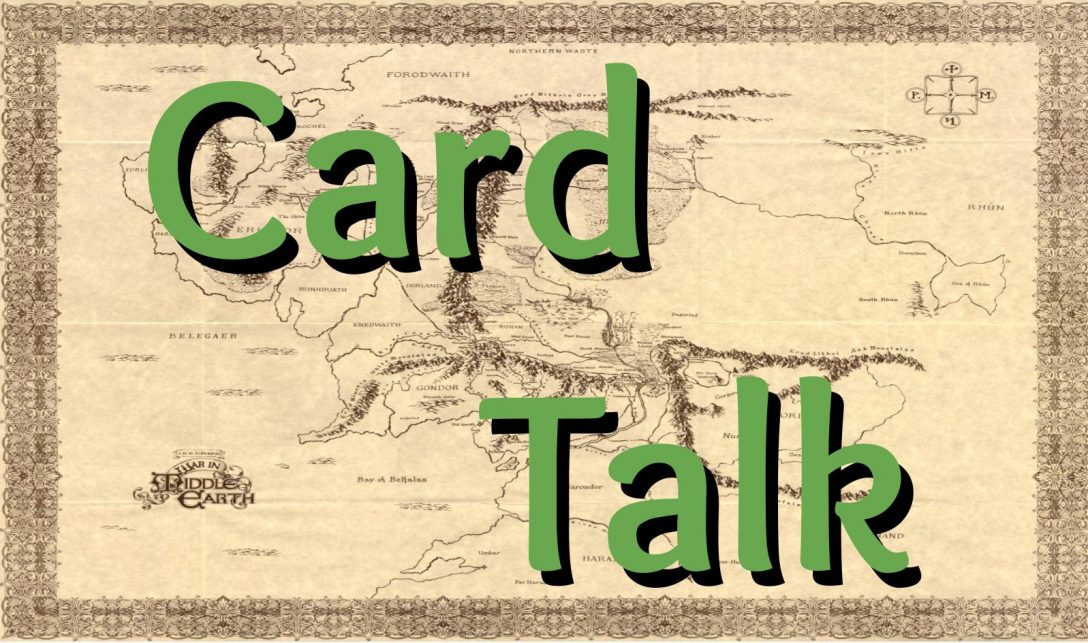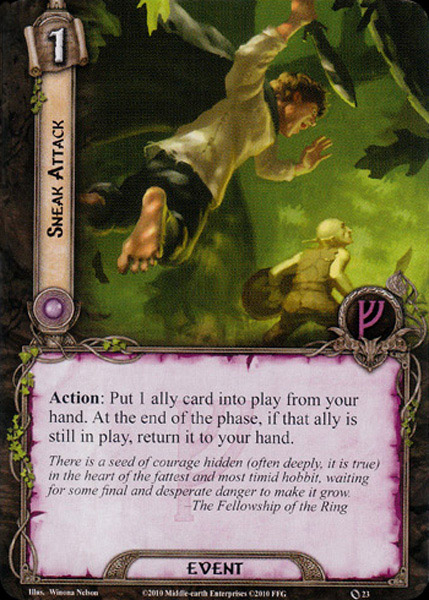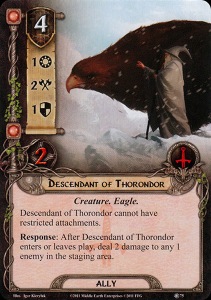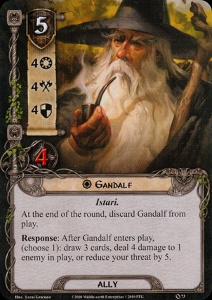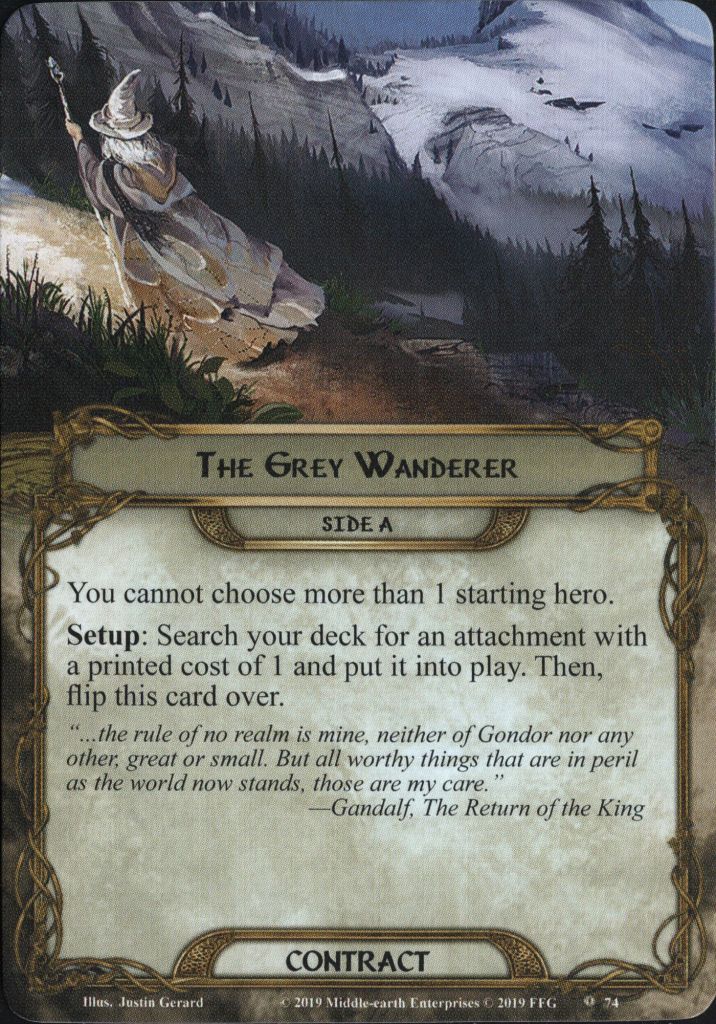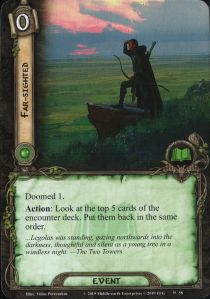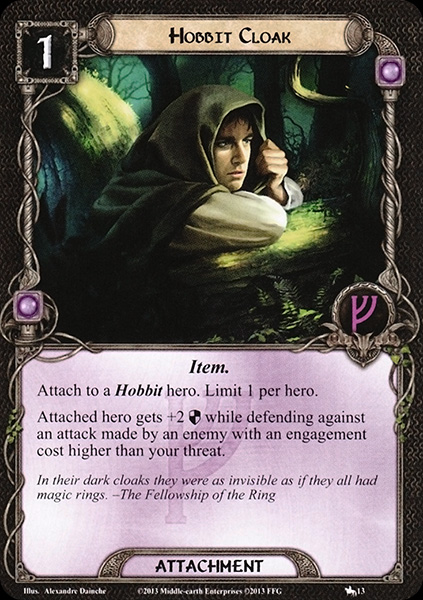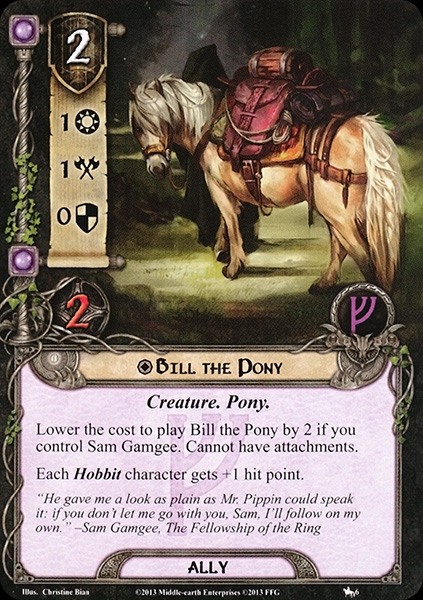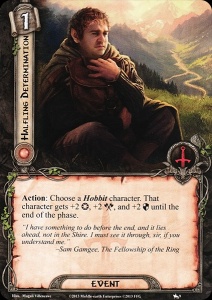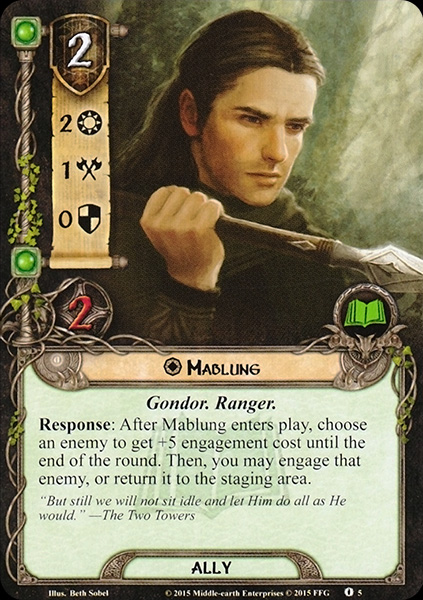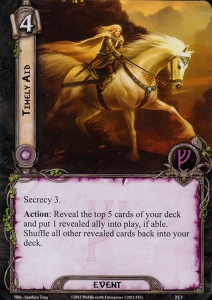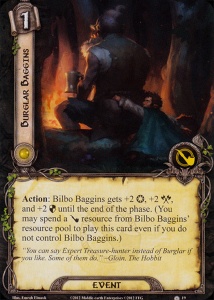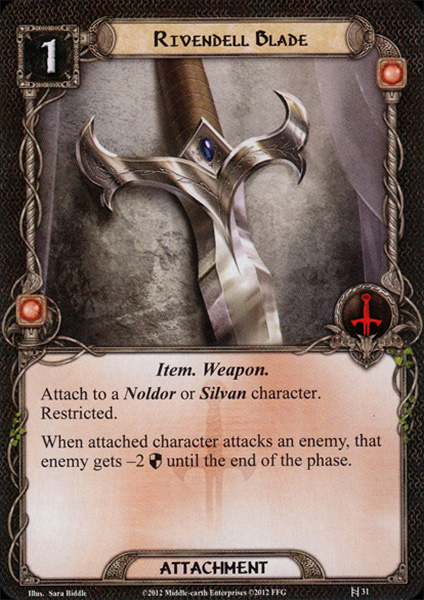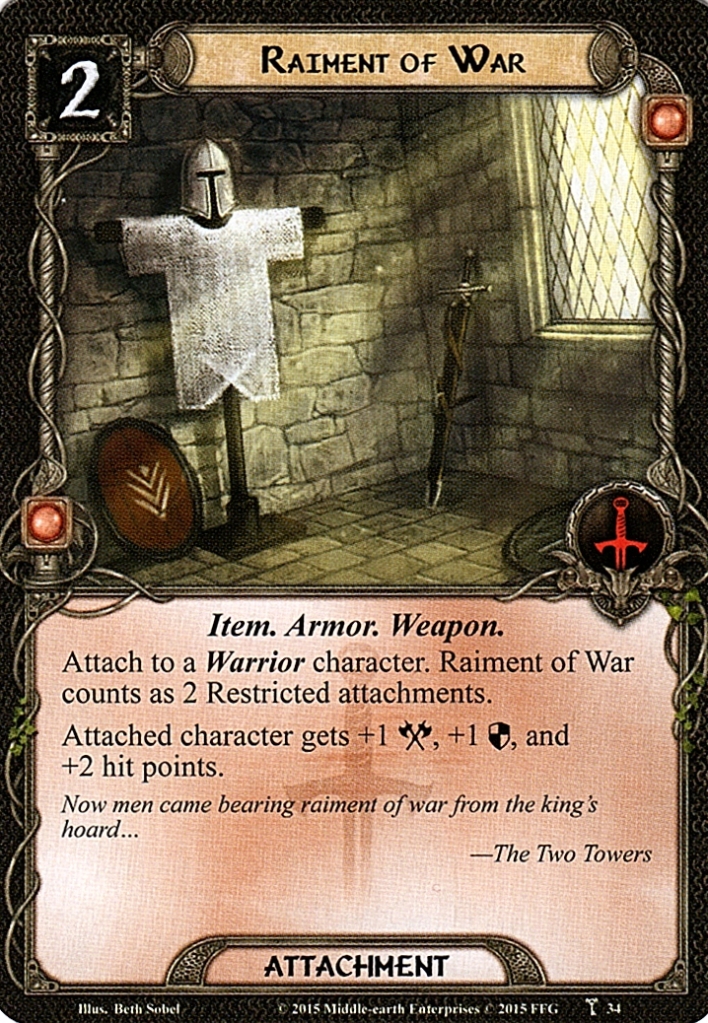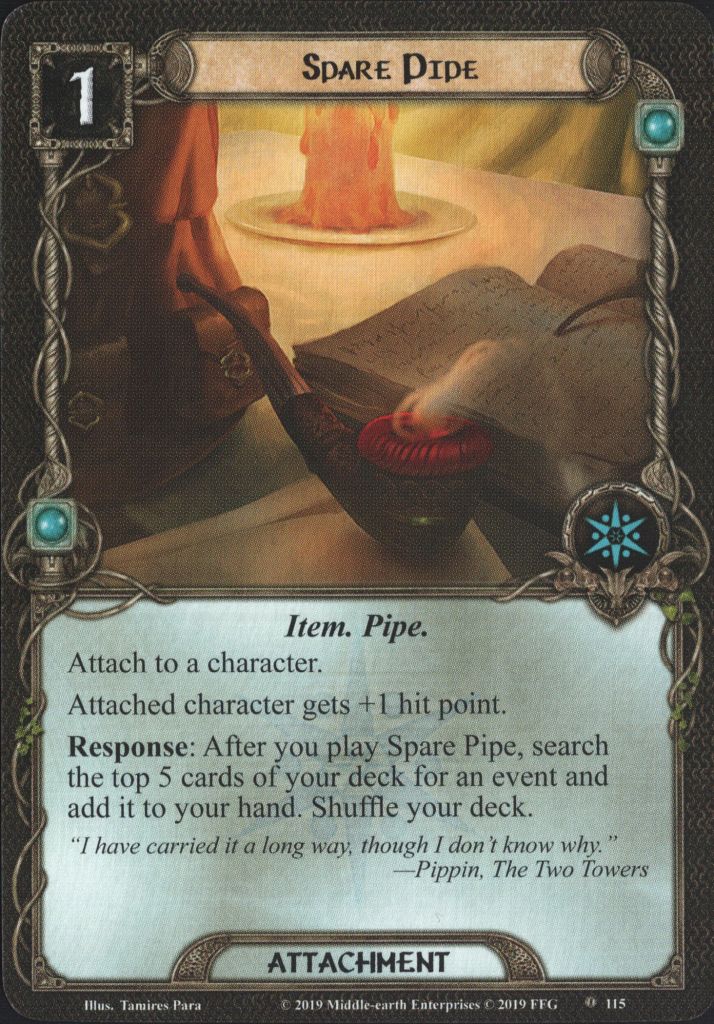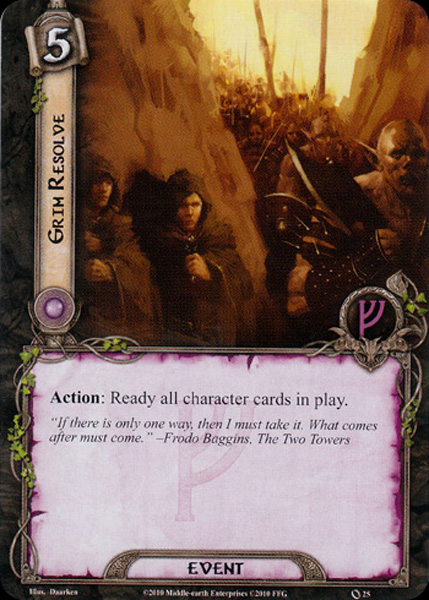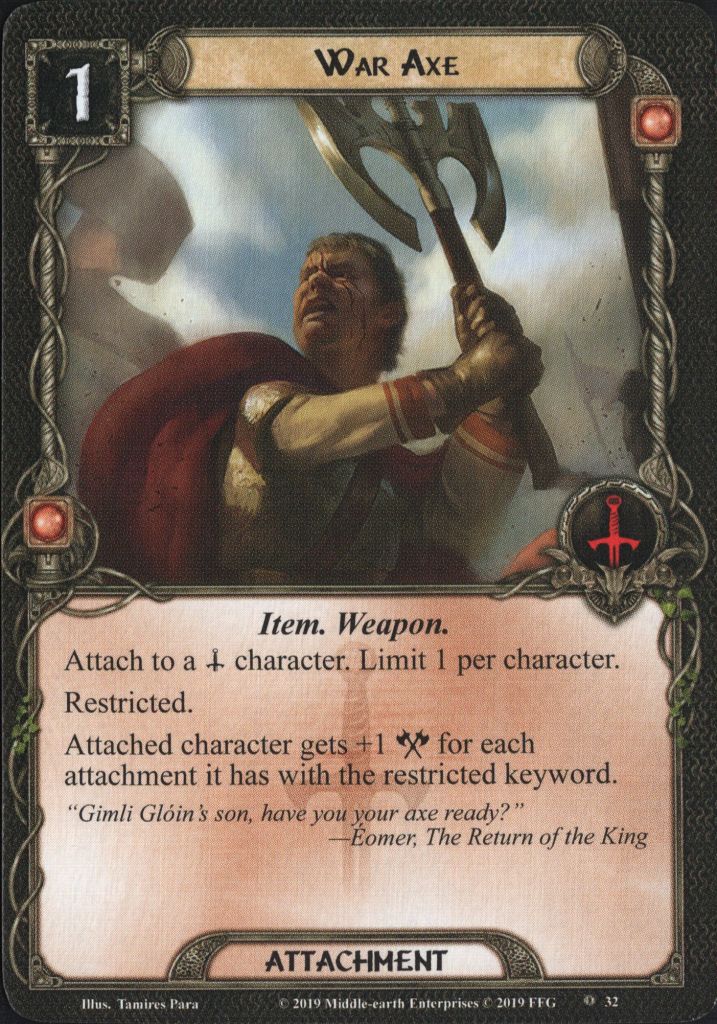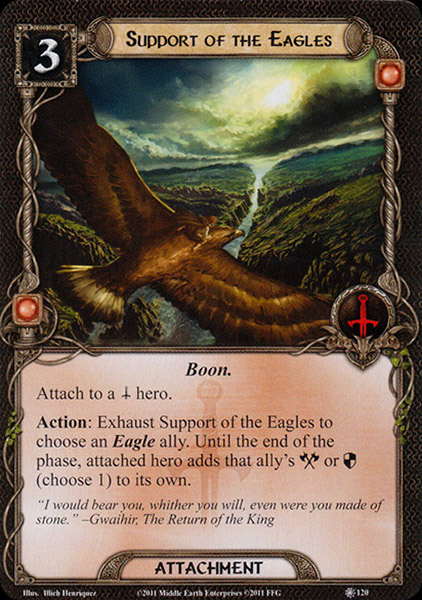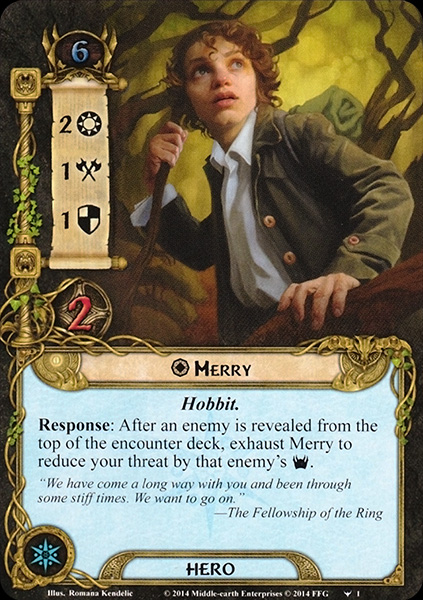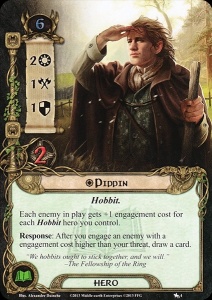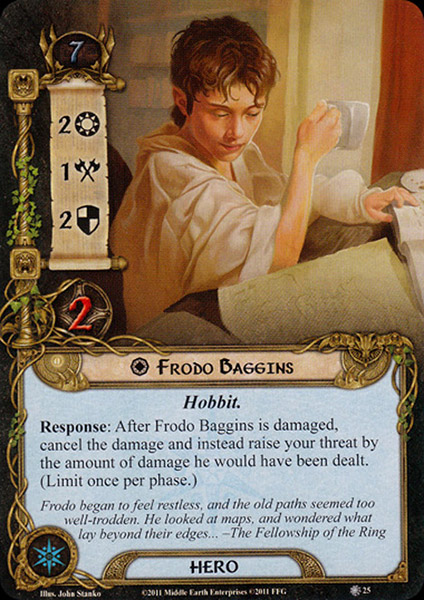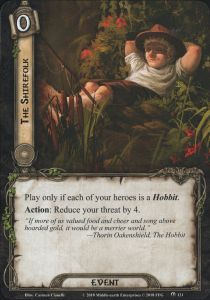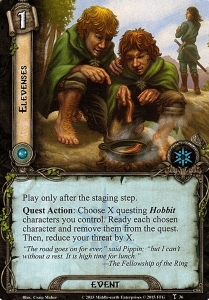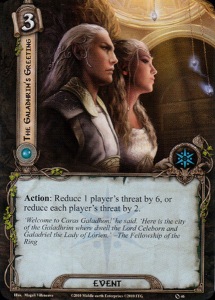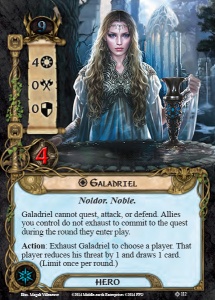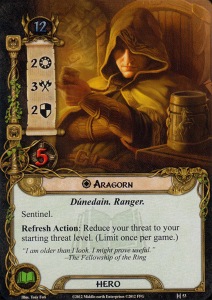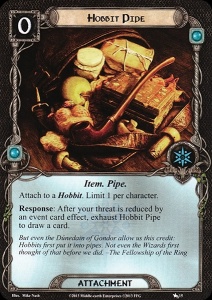- Card Talk Season 1 Episode 20
- Cycle
- Dream-Chaser
- Set
- The Grey Havens
- Player Card Categories
- Card Draw
- Discard from Hand
The deck filter and filler of discard piles.
Background
Cirdan despite his traits in the game, is one of the Teleri. He followed the stars west to shores of Middle Earth but his ship was not ready in time to travel to Valinor. He remained near the coast through the first and second ages supporting the Noldor that came in pursuit of Morgoth and later the elves and men of the last alliance against Sauron. He was the original wielder of Narya, the elven ring of fire. He gave it to Gandalf when he arrived in Middle-Earth. In books, the readers only know of him from his envoy, Galdor, to the council at Rivendell, and at the end when the ring-bearers depart at The Grey Havens in one of his ships.
Card Theme
Cards in hand are often associated with knowledge. Lore is the sphere with the most card draw effects. Even those cards are themed to represent Middle-Earth’s knowledge, stories, and songs with Gleowine, Daeron’s Runes, Deep Knowledge, Erestor, Drinking Song, and Mithrandir’s Advice representing the knowledge, stories, and songs present in Middle Earth. The Noldor discard from hand effects can represent their fading in Middle-Earth as they take their vast knowledge and experience away to Valinor.
Card Synergies and Interactions
Silver Harp

This card takes Cirdan’s ability of draw an additional card then discard one to just draw an additional card every turn.
Noldor Discard
Cirdan and Erestor heroes, at least with a Silver Harp for Cirdan, provide the extra card draw to fuel the Noldor Discard abilities. Arwen hero can provide resource acceleration. To the Sea, to the Sea! and Elven Jeweler can get cost discounts. Elven Spear and Protector of Lorien can offer stat boosts. Some Noldor allies require discarding cards either to play or keep in pay like Guardian of Rivendell, Lindon Navigator, Trollshaw Scout, and Watcher of Bruinen. Cirdan can also help set up the Noldor cards that can be or only be played from the discard pile like Elven-light, Lords of the Eldar, and Glorfindel ally.
Powerful Allies
This combo really comes to fruition once Narya and some action advantage is attached to Cirdan. In Spirit, Cirdan has a couple great options to make use of his 4 willpower and readying allies with Light of Valinor or Unexpected Courage. Readying 2 allies with already strong combat stats and then boost them can make for a great combat turn. Especially since there are a couple action windows during a player’s defense. This allows the player to exhaust the character to defend, ready in one of those action windows to use the defense boost. Then be ready for another defense with the boost or attack while still boosted. Similarly, the character can be readied after exhausting but before the attack fully resolves to use the attack bonus twice. As an added bonus, Narya giving the Leadership resource icon opens up using Sneak Attack or perhaps Reinforcements to put the ally into play temporarily and then get 2 uses out fo them.










Caldara

Cirdan’s ability provides a nice way to fill the discard pile with 2 – 3 Spirit allies for Caldara to bring back. He of course also fits nicely being a hero with the Spirit icon to count for her ability. On top that, he can have Narya to leverage the allies brought out more fully.
Ring Rating
Card Talk uses the highly scientific yet arbitrary scale of 1 ring for the card to rule them all to 10 to be cast back into the fiery chasm from whence it came.
I rate Cirdan at 3 rings. He has the fantastic 4 willpower stat putting him in the upper echelons of questing heroes with both versions of Eowyn and technically Galadriel. His ability outside Noldor discard is still very useful to help filter through the deck faster and find key cards. I’ve found the 12 threat makes him more difficult to fit into a hero lineup. The 12 threat either requires some lower threat heroes to counterbalance or be ready for combat immediately. Once Cirdan is in a deck it is also hard to not include Light of Valinor, Narya, and Silver Harp taking up more deck space. His 2 attack and 2 defense are decent to use if he doesn’t have Narya but does have another action thanks to Light of Valinor or a similar card. He’s a good questing hero that isn’t as splashable as Spirit Eowyn but offers some other utility for the players that she does not. He really shines though in Noldor Discard or a Caldara deck.
- Dave – 6
- Grant – 4
- Ted – TBR
- Joeseph Forster – 3
- Matt – 3
- Average – 4
External Links
Sample Decks
Cirdan’s Solo Support Group by The Purple Wizard
Solo version of Purple Wizard’s Cirdan’s Support Group that was designed to recur Reinforcements in multiplayer games.
Cirdan’s Solo Support Group
Main Deck
Hero (3)
Balin (On the Doorstep)
Círdan the Shipwright (The Grey Havens)
Denethor (Flight of the Stormcaller)
Ally (18)
1x Arwen Undómiel (The Watcher in the Water)
1x Beorn (Core Set)
2x Elrond (The Road Darkens)
3x Envoy of Pelargir (Heirs of Númenor)
1x Erestor (The Long Dark)
3x Galadriel (The Road Darkens)
3x Gandalf (Core Set)
1x Gimli (The Treason of Saruman)
1x Glorfindel (Flight of the Stormcaller)
1x Orophin (Celebrimbor’s Secret)
1x Squire of the Citadel (The Blood of Gondor)
Attachment (20)
2x Armored Destrier (Temple of the Deceived)
3x Dúnedain Warning (Conflict at the Carrock)
3x King Under the Mountain (On the Doorstep)
3x Light of Valinor (Foundations of Stone)
3x Narya (The Grey Havens)
3x Silver Harp (The Treachery of Rhudaur)
3x Steward of Gondor (Core Set)
Event (12)
3x A Test of Will (Core Set)
1x Captain’s Wisdom (The Thing in the Depths)
3x Reinforcements (The Treachery of Rhudaur)
3x Sneak Attack (Core Set)
2x Will of the West (Core Set)
3 Heroes, 50 Cards
Cards up to Temple of the Deceived
Sideboard
Ally (3)
1x Beorn (Core Set)
2x Squire of the Citadel (The Blood of Gondor)
Attachment (4)
1x Magic Ring (The Crossings of Poros)
2x Tome of Atanatar (The Blood of Gondor)
1x Unexpected Courage (Core Set)
Event (4)
2x Legacy of Númenor (The Voice of Isengard)
1x Second Breakfast (Conflict at the Carrock)
1x Will of the West (Core Set)
Decklist built and published on RingsDB.
